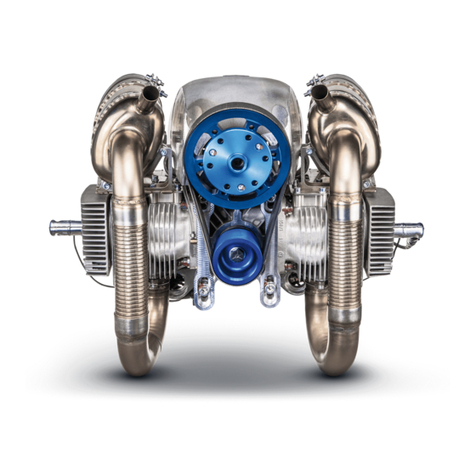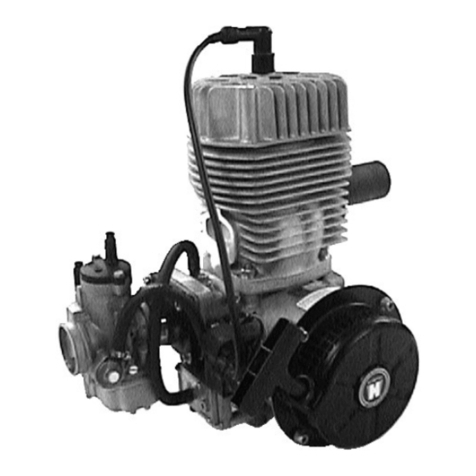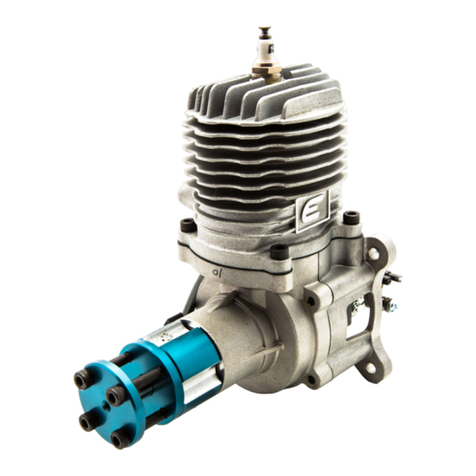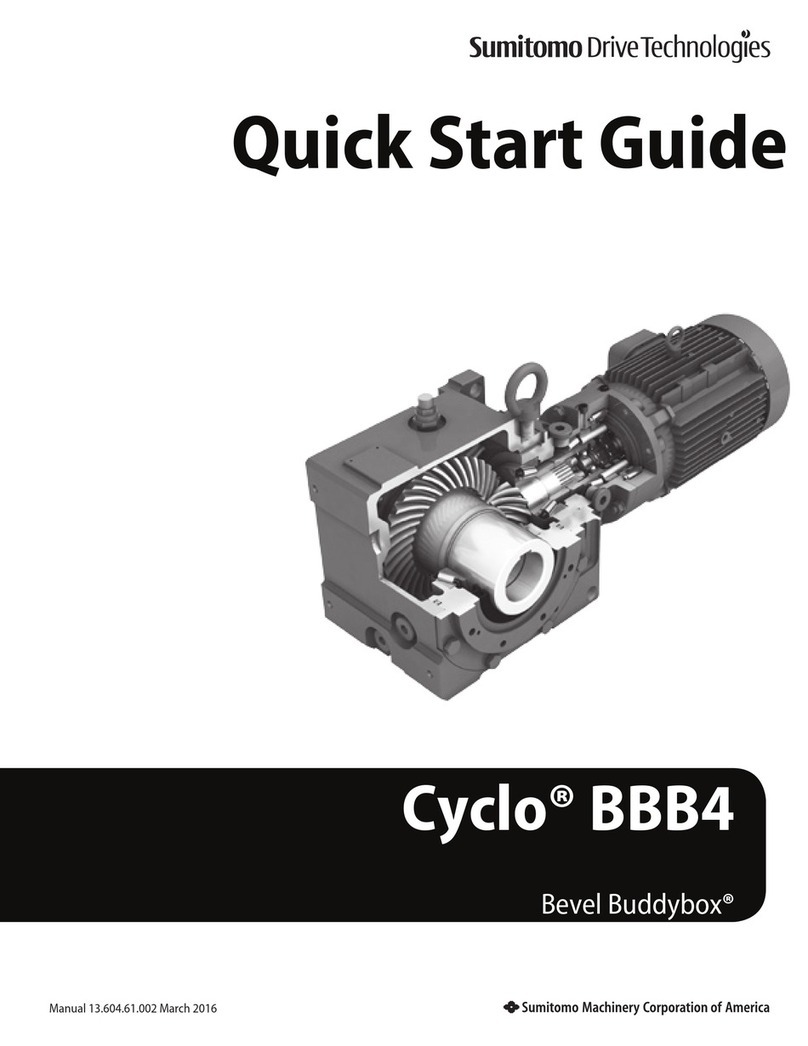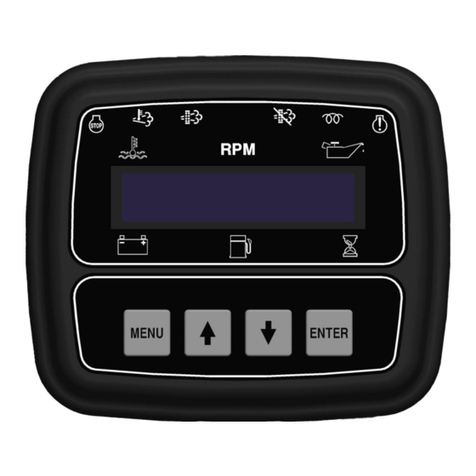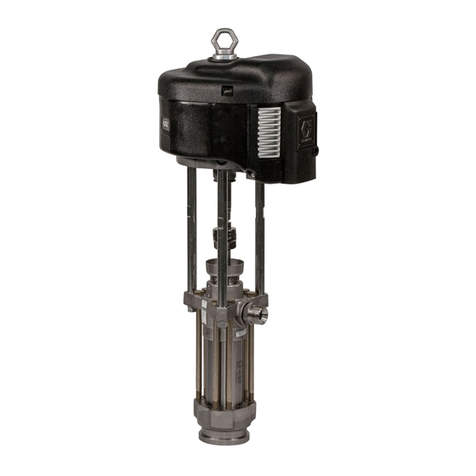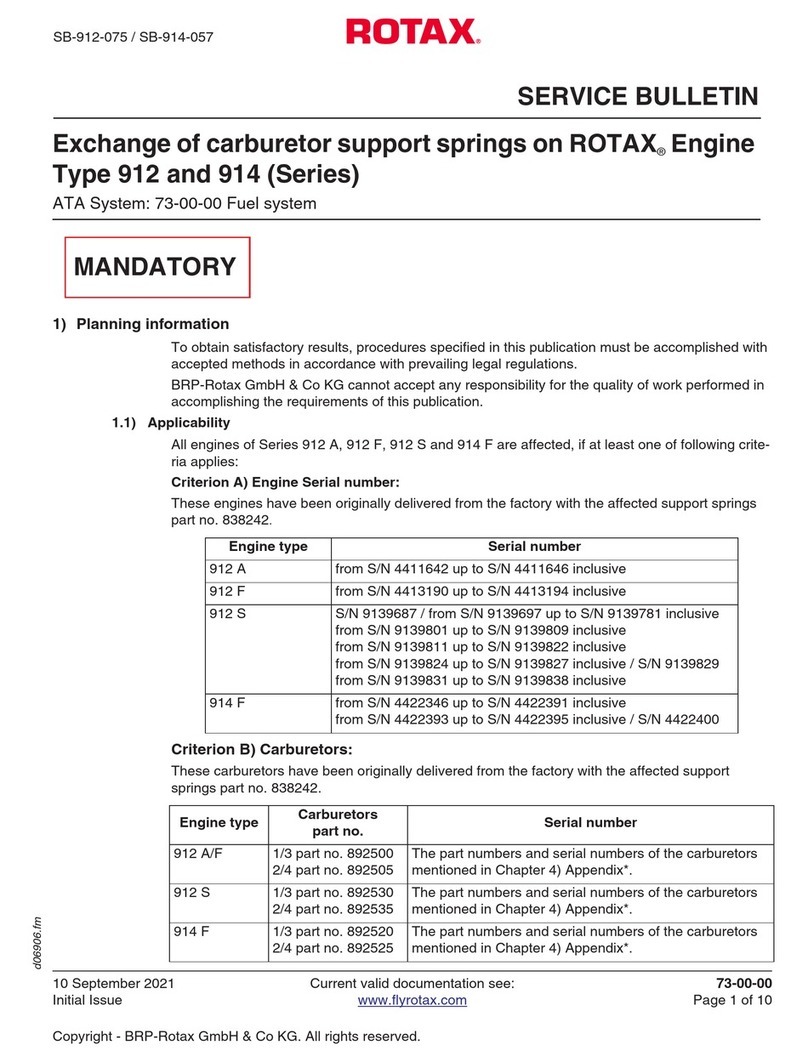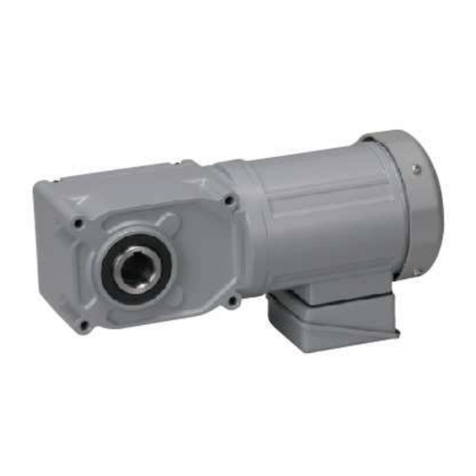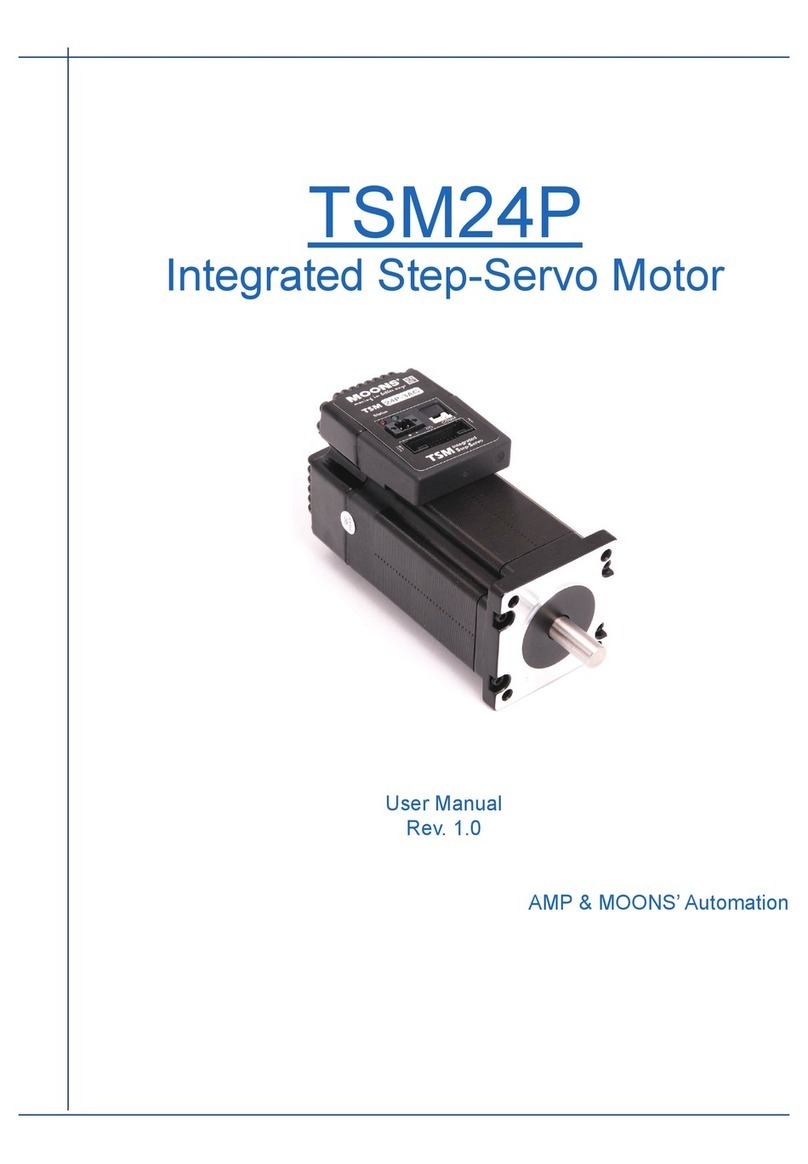Hirth 2704 User manual

Göbler-Hirthmotoren KG
Service manual
Engine
2704
Göbler-Hirthmotoren KG, Max-Eyth-Str. 10, D-71726 Benningen, Germany
Tel.: 0049-7144-8551-0, Fax: 0049-7144-5415

Engine
Type 2704
Manual
Read the operating instructions completely before the assembly of the
engine or before starting the engine.
In the interest of the ongoing developments of our products, we
reserve the right to change the delivery volume in form, technique and
supply. We also ask for your understanding that the data in this
instruction manual gives no further claims.

Table of Contents
Chapter Topic Page
1 Description of the engine, its systems, and 1-1
essential technical information
1.1 Overview of the engine 1-1
1.1.1 Model 2704 1-1
1.1.2 Description of the carburetion system 1-2
1.1.3 Description of the ignition system 1-2
1.1.4 Description of the cooling system 1-4
1.2 Installation 1-4
1.2.1 Mounting and securing the engine 1-4
1.2.2 Airflow to the engine 1-5
1.2.3 Fuel system layout 1-5
1.2.4 Adjusting the carburetors 1-6
1.2.5 Securing spark plug caps: Inverted installation 1-6
1.2.6 Disconnecting ignition system 1-6
1.3 Engine instruments 1-7
1.3.1 Cylinder head temperatures 1-7
1.3.2 Exhaust gas temperature 1-7
1.3.3 Fuel pressure 1-8
1.4 Identification plate 1-8
1.5 Technical data 1-9
1.6 Installation sketch 1-9
2 Operating the engine 2-1
2.1 General guidelines 2-1
2.2 Engine break in 2-1
2.3 Starting procedures 2-2
2.4 Operating conditions 2-3
2.5 Engine shutdown 2-3

3 Maintenance 3-1
3.1 General 3-1
3.1.1 Scope 3-1
3.1.2 Common and special tools and initial torque values3-1
3.2 Service intervals 3-2
3.2.1 Daily inspections 3-2
3.2.2 Periodic inspections 3-2
3.3 Replacement parts 3-2
3.4 Maintenance procedures 3-3
3.4.1 Carburetor 3-3
3.4.1.1 Synchronization of carburetors 3-3
3.4.1.2 Setting the fuel mixture adjustment screws 3-3
3.4.1.3 Cleaning the carburetors 3-4
3.4.2. Air filter 3-4
3.4.2.1 Removal and installation of air filters 3-4
3.4.2.2 Cleaning the air filters 3-4
3.4.3 Fuel and pulse lines 3-4
3.4.3.1 Inspection of fuel line 3-4
3.4.3.2 Inspection of pulse line 3-4
3.4.4 Spark plugs and spark plug caps 3-4
3.4.4.1 Checking spark plug caps 3-4
3.4.4.2 Spark plug installation and removal 3-5
3.4.4.3 Condition of spark plugs 3-5
3.4.5 Fan 3-5
3.4.5.1 Removal and installation of cooling system 3-5
3.4.5.2 Removal and installation of fan housing 3-5
3.4.5.3 Changing the fan belt 3-5
3.4.6 Cylinder head 3-6
3.4.6.1 Removal and installation of cylinder head 3-6
3.4.6.2 Checking cylinder head conditions 3-6
3.7 Trouble shooting 3-6
3.7.1 Engine will not start, or is very difficult to start 3-6
3.7.2 Engine will not come up to idle speed 3-7
3.7.3 Engine runs rough, uneven and with insufficient ... 3-7

3.7.4 Engine does not develop full power 3-7
3.7.5 Excessive cylinder head temperature 3-8
4. Ignition system wiring diagrams 4-1
4.1 Single ignition wiring diagram 4-2
4.2 Dual ignition wiring diagram 4-3

Chapter 1
Description of the Engine, Its Systems, and Essential Technical Data
1.1 Overview
1.1.1 Model 2704
The Hirth 2704 engine (Illus. 1.1.1-1) from Göbler-Hirth Engines Ltd., is a fan-cooled, side-
regulated, two-cylinder inline, two-stroke engine.
The cylinders consist of an aluminium alloy coated with an abrasion-resistant surface. The
cylinders are attached to the crankcase with bolts, washers and hexagonal nuts. The cylinder
heads consist of a special non-melting aluminium alloy, which resists high temperature with
an even hardness. They are fastened to the cylinder without any sealant, using cylinder bolts
and washers.
The pistons consist of an aluminium alloy and are packed with two piston rings against the
cylinder surface. The piston is connected to a piston rod with a gudgeoned pin and needle
roller bearing.
The crankshaft is made of Chromoly steel (42CrMo4) and is positioned in five grooved ball
bearings. It is a constructed crankshaft in which the individual parts are pressed together to
form the complete crankshaft. Two grooved ball bearings are attached on the power take off
side, two more between the crank control handle, and one on the ignition side. The power take
off is cone-shaped and has a centric coil in order to wind a connecting cone onto the power
take off side. The piston rods are connected to the crankshaft with crank pins and needle roller
bearings.
The crankcase consists of an aluminium alloy. It is constructed as an axial divided case and
consists of a lower and an upper part. It is held together by three cylinder bolts with safety
washers, and in addition by the eight fastening bolts of the cylinders. On the ignition side, it
includes the stator plate of the ignition and is constructed so that the fan housing can be
mounted over it.
Illustration 1.1.1-1 (Engine 2704 two carburettor)

1.1.2 Description of the Carburetion System
The fuel mixture system (Illus. 1.1.2-1) of the 2704 engine consists of one or two carburettors.
Each carburettor is connected to the entry port of the cylinder by an aluminium intake socket
and a rubber flange. The aluminium intake socket is screwed on to the cylinder with cylinder
bolts and lock washers and the carburettor is secured in the rubber flange by a hose clamp.
The carburettor is thermally neutralized by a piece of insulation. The hot cool air stream
exiting from the intake socket is kept apart from the carburettor by shield in the intake socket.
On the intake side of the carburettors are one or two dry air filters.
Illustration 1.1.2-1 (Fuel Mixture [or Carburetion] System)
1.1.3 Description of the Ignition System
The ignition system (Illus. 1.1.3-1, 1.1.3-2) consists of an armature plate, a magneto, an E-
Box, two ignition coils and the ignition cables with spark plug caps. The ignition is entirely
electronic and has an e-prom for a free programmable electro-dynamo-magnetic ignition.
There is generator power for electric uses during operation and for charging the battery. The
ignition system is operational with single as well as double ignition. The armature is fastened
to the crankcase on the ignition side. The magneto is situated on the crankshaft and encloses
the armature plate. The fan housing shields the magneto wheel of the ignition. On the fan
housing is the E-Box and the ignition coils on an ignition coil fastener.
Illustration 1.1.3-1 (Single Ignition)

Illustration 1.1.3-2 (Dual Ignition)
Illustration 1.1.3-3 (View of the ignition side with installed ignition system)
1.1.4 Description of the Cooling System
The 2704 engine has a mechanically operated forced air-cooling, which is transposed on the
exhaust side and fixed on the ignition side. (Illus. 1.1.4-1).
The fan is mounted inside the fan housing by a cam. It is propelled by a flat belt and a catch,
which is attached to the magneto wheel of the ignition.
The cool airflow, built up by the fan, is divided over the two cylinders for maximum cooling
through the fan shroud surrounding the two cylinders. The hot cool airflow is blown off into
the surroundings on the intake side.

Illustration 1.1.4-1 (View of the Fan Housing and the Shroud)
1.2 Installation Instructions
1.2.1 Mounting and Securing the Engine
The four threaded sockets (UNC- ½“) for mounting the 2704 engine (Illus. 1.2.1-1) are
located on the underside of the crankcase.
Illus. 1.2.1-1 (Engine Mounting Sockets)
The engine should be mounted so that the moment transmitted from the engine to the mount
can be on the broadest base as possible. The shock mounts used should be as stiff as possible,
because the engine vibration can result in a mounting that is not secure. This leads to
problems with the fuel mixture (i.e. foaming of the fuel, uncontrolled flapping of the fuel
pump membrane) and with that to unsafe operation of the engine.
-Recommendation:
The engine is bolted to a plate that is about twice the size as the underside of the engine (the
wider the better). On the two outsides of the plates, there should be six or more rubber
dampeners, three on each side, in line. This entire assembly will be fastened through the
rubber dampener elements onto another plate that in turn is tightly connected to the apparatus.
Air buffling
cowl
Fa
n
housing

1.2.2 Airflow to the Engine
The engine has to be installed in such a way that the fresh air stream supplied is sufficient to
insure its cooling and adequate for the supply of air to the carburettor.
For a cowled installation it is necessary to take care that the outgoing hot cool air stream is
not allowed into the carburettors, since that will lead to a drastic reduction in performance. At
the same time, the outgoing hot cool air stream must be able to exit the cowling without
blockage, since this will force the engine to overheat and lead to its destruction.
The engine's forced air-cooling system is designed so that if enough fresh air flows in, the
satisfactory cooling of the engine is insured in any type of operation. No changes may be
made in the cooling system.
It is absolutely imperative to have a sufficient supply of fresh air.
1.2.3 Fuel System Layout
The fuel supply of the engine is supported by a diaphragm pump (Illus. 1.2.3-1), operated by
pressure from the crankcase.
Illustration 1.2.3-1 (Diaphragm Fuel Pump)
This fuel pump is situated in the fuel line between the fuel tank and carburettor. A fuel filter
should always be installed between the diaphragm pump and fuel tank. The diaphragm pump
should be installed at a place with the least influence of vibration or heat.
Take care to insure that, with an upright installation of the diaphragm pump, the fuel exit is on
top. The placement of the connecting pieces can be recognized by arrows on the casing.
The central connection of the fuel pump is the impulse connector. The impulse line from the
crankcase to the diaphragm pump should be as short as possible, straight and inclining toward
the diaphragm pump. When choosing the impulse line and the fuel line, take care to use rigid
lines, which do not expand under pressure. The impulse line should not exceed a maximum
length of 150 mm and a minimum inside radius of 6 mm.
In any case it is advantageous to position the fuel tank above the engine, since this ensures a
certain pressure to the fuel supply. In addition, however, it is recommended to use the
diaphragm fuel pump. The fuel pressure should be checked with an appropriate measuring
instrument in any event.
When installing the fuel tank underneath the engine, the following geometric data must be
noted.
The maximum length of the suction line between fuel tank and membrane line should not
exceed 2000 mm with a minimum inside radius of 6 mm. The maximum suction height must
Impuls connectio
n

not exceed 1 m. It is necessary to keep in mind the possible incline of the finished product
(climb and descent with flying machines, up and down hills with ground vehicles).
The maximum length of the pressure line should be no longer than 500 mm, with minimum
inside radius of 6 mm. Do not exceed the maximum pressure between the centre of the
diaphragm pump and the centre of the carburettor float housing.
In case the diaphragm pump is added on to the engine, it has to be installed vertical to the
crankshaft axis (power take off to ignition side). This guarantees that vibrations coming from
the engine around the crankshaft axis do not impede the actions and function of the diaphragm
pump with conflicting vibrations.
1.2.4 Adjusting the Carburettors
Adjustment of the slide on the dual carburettors is accomplished by Bowden cables. It is best
to route the two cables to a single point with a Y-fitting. If possible, both cables should have
the same length between the Y-fitting and the carburettors.
At idle (both slides sit on the idle stop screw), there should be some play so that the slide can
securely reach the idle position.
It is absolutely necessary to take care that both slides of the carburettors move simultaneously.
The idle position of the slides must be the same with both carburettors. In order to
accomplish this, the slides must be brought on the same level in the idle position, using the
idle stop screws (measure and adjust the opening height of both slides to the same level).
When pulling the slides open, they should both be synchronized to lift off from the adjustment
screws at the same time to open the passage.
1.2.5 Securing the Spark Plug Caps: Inverted Installation
If the engine is installed in an inverted position, the spark plug caps must be secured in such a
way to prevent interruption or breaking of contact through vibration of the engine (Secure
with safety wire).
1.2.6 Disconnecting Ignition System
Both circuit breakers must absolutely be installed to separate multiple switches. These
instructions must absolutely be followed, since combining the two multiple cables to one
switch, will cause one circuit to drop out.
1.3 Engine instruments
It is urgently recommended that the cylinder head temperature, the exhaust gas temperature,
and the fuel pressure be monitored.
Proper adjustment of the engine guarantees its trouble free functioning under the prescribed
installation conditions. When engine installation is not carried out by Göbler-Hirth Engines,
there are sometimes problems, such as insufficient flow of cool air, a fuel tank installed too
low for ascending and descending flight/uphill and downhill driving, and it is absolutely
necessary for secure engine operation that the cylinder head temperature, exhaust gas
temperature, and fuel pressure be monitored.
The table below lists items that can be ordered from Göbler-Hirth Engines Ltd.

Table 1.3-1
Designation Order Number
Exhaust Gas Temperature Gauge 029.30
Cylinder Head Temperature Gauge 029.31(SI), 029.32 (DI)
Fuel Pressure Gauge 029.20
Tachometer 029.6
1.3.1 Cylinder Head Temperature
Cylinder head temperature (see Table 1.5-1) is measured at the spark plug. A ring-shaped
thermal element placed under the spark plug is screwed in with it. The placement of the
thermal element is of great importance. The connecting cable of the thermal element should
be led upward behind the spark plug in such a way that the cool air stream does not blow on
the connection of the ring-shaped sensor.
Only calibrated sensor devices should be used. Notice that measuring cables that have later
been made longer between the thermal element and the measuring device may falsify the
reading. Temperature measuring devices with lengthened cables have to be recalibrated
at time of installation.
Defective or improperly working thermal elements, temperature gauges, and measuring cables
have to be replaced immediately.
The maximum acceptable cylinder head temperatures mentioned by Göbler-Hirth
Engines are based upon the proper positioning and calibration of the measuring devices
within the range of these temperatures.
1.3.2 Exhaust Gas Temperature
The exhaust gas temperature (see Table 1.5-1) is measured individually for each cylinder at
the exhaust bend [manifold]. An exhaust bend that is prepared for installation of thermal
elements may be ordered from Göbler-Hirth Engines.
A staff-shaped thermal element will be pressed into a special sealing screw joint.
Of great importance is the installation position of the thermal element. The thermal element
must be pushed into the exhaust bend deep enough so that its point is in the middle of the
exhaust bend pipe [manifold].
Only calibrated measuring devices should be used. Notice that measuring cables that have
later been made longer between the thermal element and the measuring device may falsify the
reading. Temperature measuring devices with lengthened cables have to be recalibrated
at time of installation. Defective or improperly working thermal elements, temperature
gauges, and measuring cables have to be replaced immediately.
The maximum acceptable exhaust gas temperatures mentioned by Göbler-Hirth
Engines are based upon the proper positioning and calibration of the measuring devices
within the range of these temperatures
1.3.3 Fuel Pressure
(See Table 1.5-1)
1.4 Identification Plate
The identification plate is on the intake side, upper side of the crankcase.

Illustration 1.4-1 (Identification Plate Position)
1.5 Technical Data
Table 1.5-1
Manufacturer Göbler-Hirth Engines Ltd.
Model 2704
Working process Two stroke
Number of Cylinders 2, in line
Displacement 625 cm3
Stroke 69 mm
Bore 76 mm
Compression Ratio 9.5 : 1
Performance 32,4 kW (44 PS) at 4700 RPM (single carburettor)
39 kW (53 PS) at 5500 RPM (dual carburettor)
Maximum engine speed 6500 RPM
Direction of rotation Left, as seen from PTO side
Starter Electric start and/or recoil starter
Ignition System Electronic dynamo magneto ignition, single or dual
Generator 250 W, 12 V
Spark Plugs (single ignition) 023.29, BR8HS (NGK), W24FSRU (ND)
Spark Plugs (dual ignition) 023.28, BR8ES (NGK), W24ERS (ND)
Ignition timing 16° BTDC (at 2000 RPM)
Fuel mixing system 1 BING 54/38/134, 1 air filter (dry)
2 BING 54/38/135, 2 air filters (dry)
Cooling Air cooled by axial blower turned by a flat belt
Mixture 1 : 50
Fuel Premium lead free, 95 Octane (RON)
2-stroke oil Good quality 2-stroke oil for hot (air-cooled) engines
Cylinder head temperature, max. 280° C / 536°F
Exhaust gas temperature, max. 680° C / 1256°F
Fuel pressure, minimum 0.4 bar / 5.8 psi
Engine weight without muffler 31 kg / 70.88 lbs
Muffler weight 6 kg / 7.33 lbs

1.6 Installation sketch
36 377
223
1/2"-13UNC 24
450
112
36 56
31
96
210
208
383

Chapter 2
Operating the Engine
2.1 General Guidelines
It is absolutely necessary to follow the instructions in this chapter in order to achieve long-
term, economical, and satisfactory service from the engine.
-USE ONLY THE PRESCRIBED TYPE OF TWO STROKE OIL AND THE PROPER
GRADE OF GASOLINE.
-INSURE THAT FUEL IS MIXED IN THE CORRECT GAS/OIL RATIO .
-REMOVE THE FUEL FROM THE CARBURETOR BOWLS AND GAS TANK
WHENEVER THE ENGINE IS NOT GOING TO BE USED FOR AN EXTENDED
PERIOD. AFTER A LONG STANDDOWN, REMOVE ANY LEFTOVER FUEL IN
CARBURETOR BOWLS AND GAS TANK BEFORE OPERATING THE ENGINE.
-TAKE CARE THAT THE AIR CIRCULATION IS SUFFICIENT TO COOL THE
ENGINE AND SUPPLY THE CARBURETORS.
-INSURE THAT THERE IS NO OBSTRUCTION THAT CAN IMPEDE THE EXIT OF
HOT AIR.
-BE SURE THAT HEATED AIR IS NOT SUCKED INTO THE CARBURETORS.
-USE ONLY RESISTOR TYPE SPARK PLUGS AND RESISTOR PLUG CAPS.
-EVERY TIME A WARM UP PHASE BEFORE RUNNING THE ENGINE UNDER
LOAD
2.2 Break In Procedures
Hirth engines have no explicit break in procedures, since the Nikasil coating of the cylinders
and the Aluminium pistons do not have to adjust to each other. The engines are sealed from
the time of their assembly in accordance with the maximum temperatures prescribed in
Chapter 1 for cylinder heads and exhaust gas.
After the first 10 – 15 hours in service or after a major inspection, the following tasks should
be accomplished for safety reasons:
-tighten engine mount bolts
-tighten cylinder head bolts
-tighten spark plugs
-check for leaks, loose nuts and bolts
Attention !
For safety reasons, it is recommended that the following items be checked each time before
operating the engine:

-Starter (check connections, installation, and condition; correct if necessary)
-Carburetor (check connections, installation, and condition; correct if necessary)
-Ignition (check connections, installation, and condition; correct if necessary))
-Fan (check installation and condition; check condition and tension of fan belt; correct if
necessary)
-Cylinder heads (check installation and condition; correct if necessary)
-Cylinders (check installation and condition; correct if necessary )
-Exhaust manifold (check installation and condition; correct any discrepancy)
-Muffler (check installation and condition; correct any discrepancy)
-Spark plugs and plug caps (check installation and condition; replace if necessary)
-Fuel system (check for leaks and dirt in filters; repair or change, as necessary)
2.3 Starting Procedure
1. Fuel supply (insure tank is full and fuel valve is open)
2. Use choke if engine is cold, but not if engine is warm or hot.
3. Set throttle at idle (carburettor slide should also be at idle position)
4. Close ignition circuit (Turn ignition switch to ON-Position )
5. Start engine (use starter for maximum of 10 seconds)
6. If the cold engine will take the gas, the choke can be retarded (check by advancing throttle
lightly)
7. Allow engine to warm up for 3 minutes at 1/4 power (ca. 3000 rpm).
8. When it reaches operating temperature, engine is ready to go.
Notice:
If the engine is or should be later equipped with a centrifugal clutch, the following procedure
must be observed:
1. Warm up the engine with enough RPM to keep centrifugal clutch fully engaged.
2. Accomplish the warm up phase without allowing clutch to disengage. If engine
revolutions are very low, with clutch not engaged, the warm up will take longer.
Attention !
If the warm up or other engine operation is carried out in the range where the clutch engages,
the result may be increased wear on the surface, glazing of the coating, or overheating of the
clutch.

2.4 Operating Conditions of the Engine
During operation of the engine, it is necessary to monitor the cylinder head and exhaust gas
temperatures of both cylinders. So long as the maximum-allowed cylinder head- or exhaust
gas- temperatures are not exceeded, the engine can be operated at the selected power setting
(including maximum power) without any time limitation. Furthermore, it is recommended
that fuel pressure be monitored during engine operation. Insufficient fuel pressure can lead to
loss of performance and cause the engine to miss.
2.5 Engine Shutdown
Before turning the engine off, it should be run at idle power for one minute. Because of the
fan operation, the cylinder head temperature should go down. This procedure should always
be followed, since an engine turned off right after operating at high speed has a tendency to
overheat.

Chapter 3
Maintenance
3.1 General
3.1.1 Scope
This chapter contains the necessary instructions for technically qualified personnel to carry
out minor inspections and repairs, such as:
-Periodic inspections of the engine
-Maintenance of engine components
-Trouble shooting
3.1.2 Tools and Special Tools and Initial Torque Values
The specifications and sizes of tools are given according to the metric system and can be
procured commercially in specialty shops.
Tools: (metric tools)
Type Size Type Size
Open-end wrench 7 Open-end wrench 8
Open-end wrench 10 Open-end wrench 13
Hexagonal socket wrench 3 Hexagonal socket wrench 4
Hexagonal socket wrench 5 Hexagonal socket wrench 6
Sparkplug wrench [no size given] Sparkplug wrench 20.6/20.8
Torque wrench 0 – 100 Nm
Special tools can be procured commercially, from Göbler-Hirth Engines Ltd. , under specific
G.-H. numbers
Special tools:
Type GH-number
Flywheel puller W 138
Piston ring clamp (cylinder mounting) W 108/15
Initial Torque Values
Type Initial Torque Type Initial Torque
M4 x ... 2,8 - 3,3 Nm M5 x ... 4 - 4,4 Nm
M6 x ... 9,6 – 11 Nm M8 x ... 23 - 28 Nm
M16 x ... 70 – 80 Nm Spark plug 16 Nm

3.2 Service Intervals
3.2.1 Daily Inspections
Before operating the engine, a thorough daily inspection should be carried out. Observe the
following points:
1. Air filter - check condition and installation
2. Starter - check condition and installation
3. Ignition system - check condition, fastening, and connections
4. Fan housing - check condition and installation
5. Fan - check condition and fastening
6. Fan belt - check condition and belt tension
7. Cowling - check overall condition and the fasteners
8. Crank case and cylinders - check for leaks overall condition of installation
9. Spark plug caps - check condition and the connections
3.2.2 Periodic Inspections
Inspection interval 25 h 50 h 100 h 500 h
Cooling
Airway: check for free flow and freedom from pollutants X X X
Baffles: check for damage and cracks X X X
Carburetor
Air filter: clean X X X
Carburetor adjustments: check X X X
Carburetor: clean X X X
Fuel system
Fuel filter: clean X X X
Fuel lines and connections: check X X X
Impulse line [to the membrane pump]: check X X X
Spark plugs
Clean spark plugs X X X
Check gap of electrodes X X X
Exhaust system
Check for damage and tight fit X X X
Check exhaust pipe for residue X
3.3 Replacement Parts
The parts listed in Table 3.3-1 should definitely be replaced after the specified number of
hours of operation. If signs of excessive wear appear before then, that particular part should
be replaced at that time.

Table 3.3-1
The abbreviation "S" means single ignition and "D" represents dual igntion.
Number Part Order Number Hours in service
2 Spark plug S 023.29 50
4 Spark plug D 023.28 50
2 Spark plug cap 024.22 100
4 Spark plug cap 024.22 100
2 Piston set 014.78 1000
1 Crankshaft 271 BC 1000
2 Cylinder head S 322 A3 + 322 B2 1000
2 Cylinder head D 272 AW2 + 272 AW3 1000
2 Cylinder 272 AL1 1000
2 Carburetor 54/38/141 1000
2 Air filter 066.16 100
3.4 Maintenance Procedures
3.4.1 Carburetor
The carburetors of Hirth engines are jetted in such a way by the manufacturer that the engine
is guaranteed to run thermally secure. Since interference with the jetting of the carburetors
may lead to overheating, and thus to the destruction of the engine, such intereference must be
avoided. Only original replacement parts should be used. Data concerning carburetor
mounting can be obtained from Göbler-Hirth Engines. Give carburetor specifications, which
are marked at the solder joint of the carburetor intake.
3.4.1.1 Synchronization of Carburetors
In order to insure even performance and a smooth running engine, both carburetors have to be
synchronized precisely. Note that the idle adjustment screw holds the slide in the same
position on both carburetors. Measure and adjust the opening height on both carburetors for
this. The two cables which move the slide in the carburetor usually come together in a Y
fitting leading to a single throttle cable. The cables between the Y fitting and the carburetors
need to be adjusted so that there is some play in the cable at the idle position. This will insure
the proper idle position of the slides. When the throttle cable is pulled, the slides of the
carburetors should move upward simultaneously from the idle position. Lubricate cables if
difficult to operate. Defective or frayed cables have to be exchanged for new ones
immediately. Bent cable must be changed immediately.
3.4.1.2 Setting the Fuel Mixture Adjustment Screw
In both carburetors, the idle mixture adjustment screw is opened half a turn as its normal
setting. For this, first carefully turn the screw to closed position, then open it one half turn.
Table of contents
Other Hirth Engine manuals
Popular Engine manuals by other brands

Subaru
Subaru EA175V Instructions for use
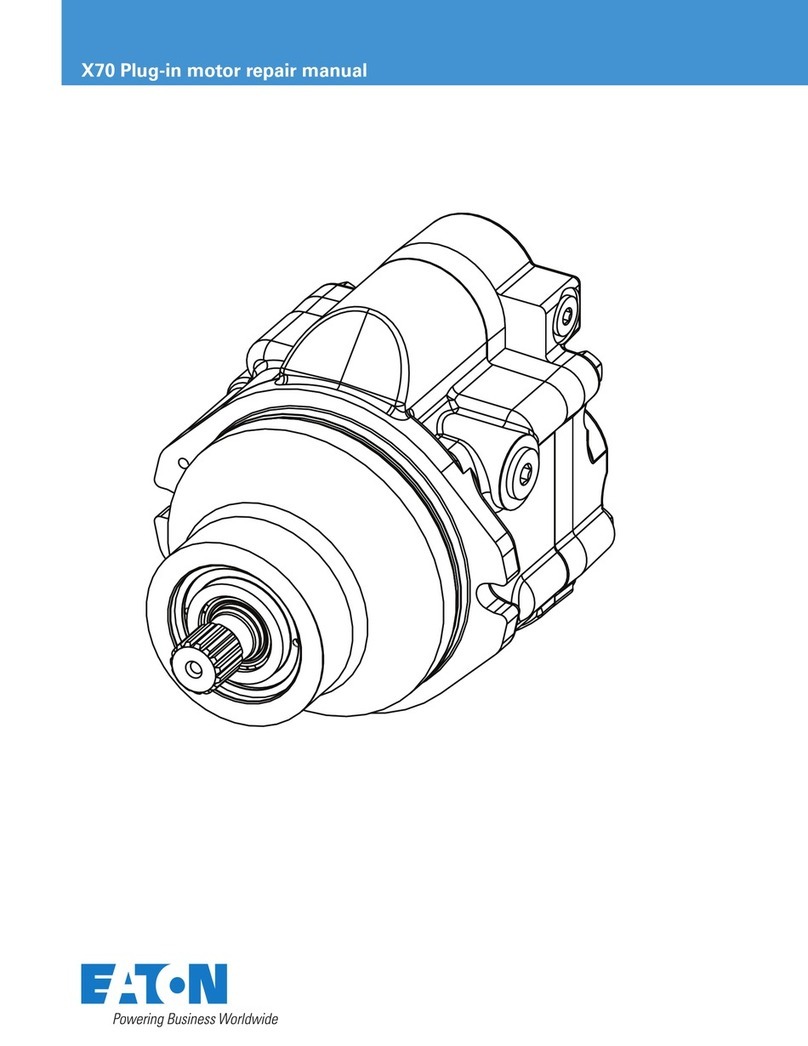
Eaton
Eaton X70 Repair manual

Xylem
Xylem Bell & Gossett Ecocirc XL Installation, operation and maintenance manual
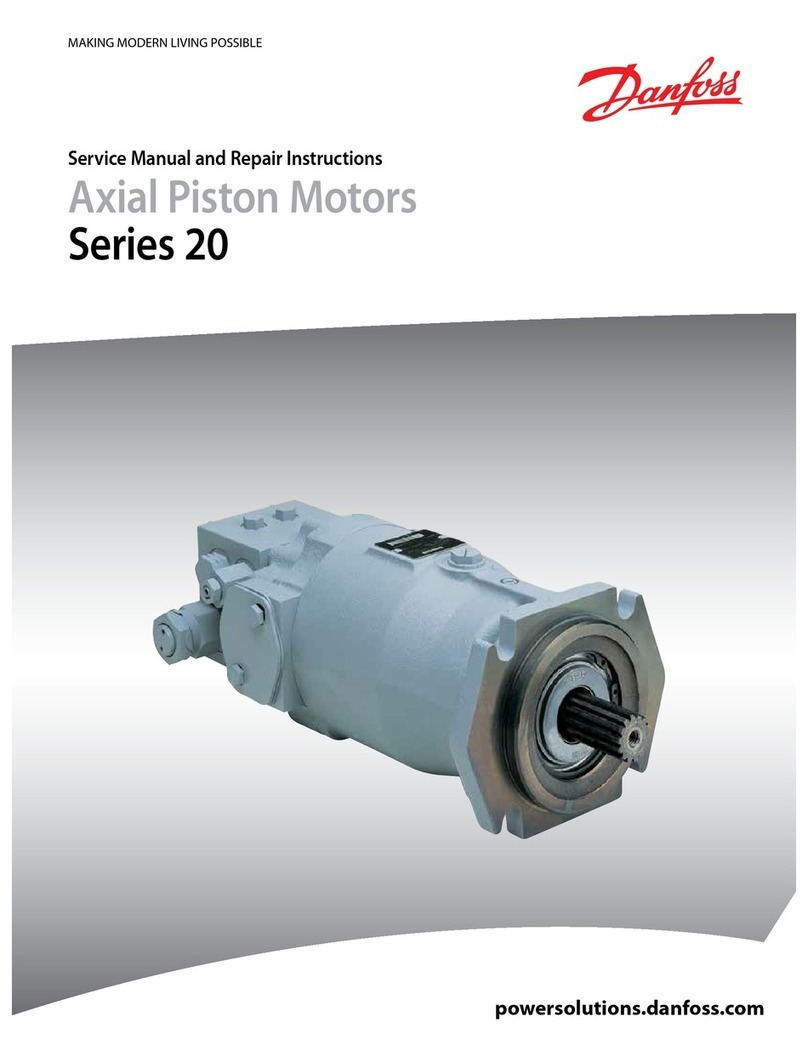
Danfoss
Danfoss Series 20 Service manual and repair instructions
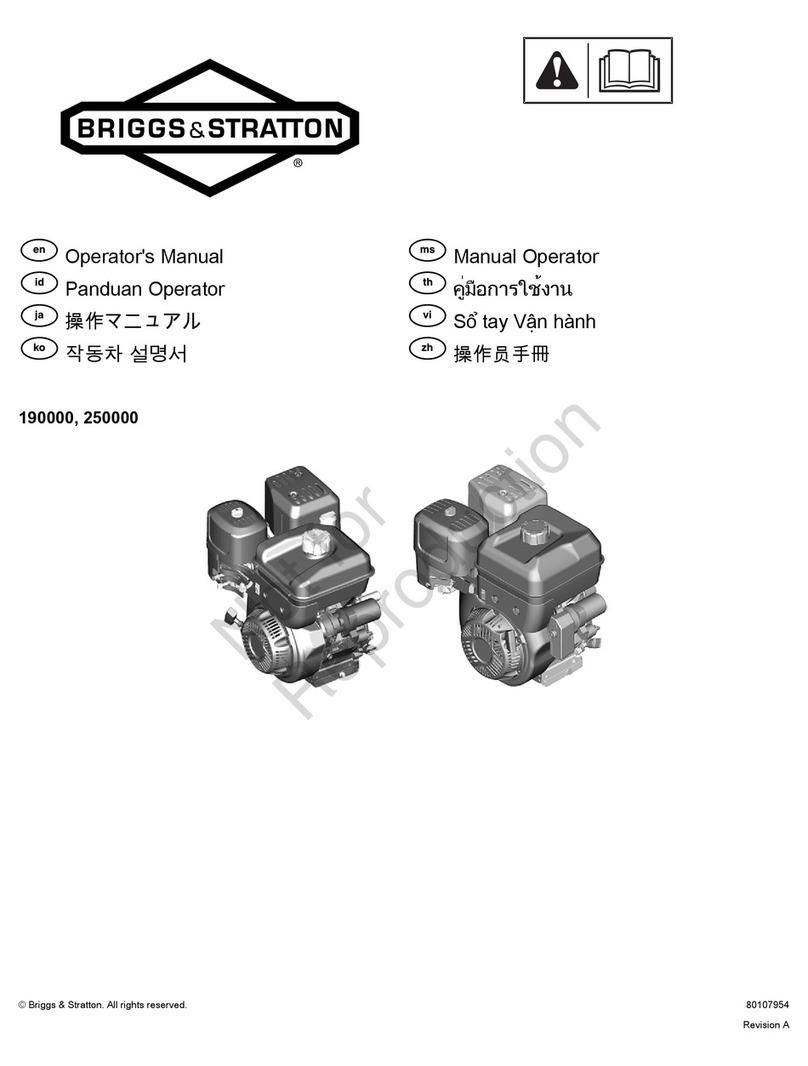
Briggs & Stratton
Briggs & Stratton 250000 Series Operator's manual

Universal Motors
Universal Motors M-12 owner's manual
